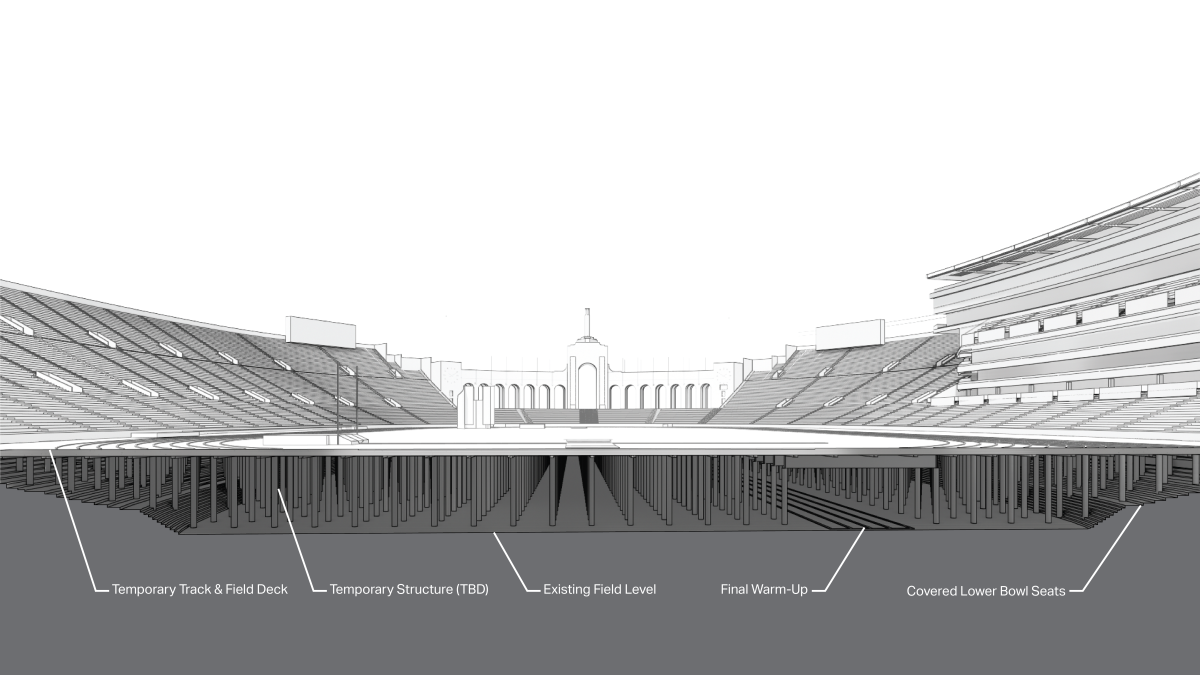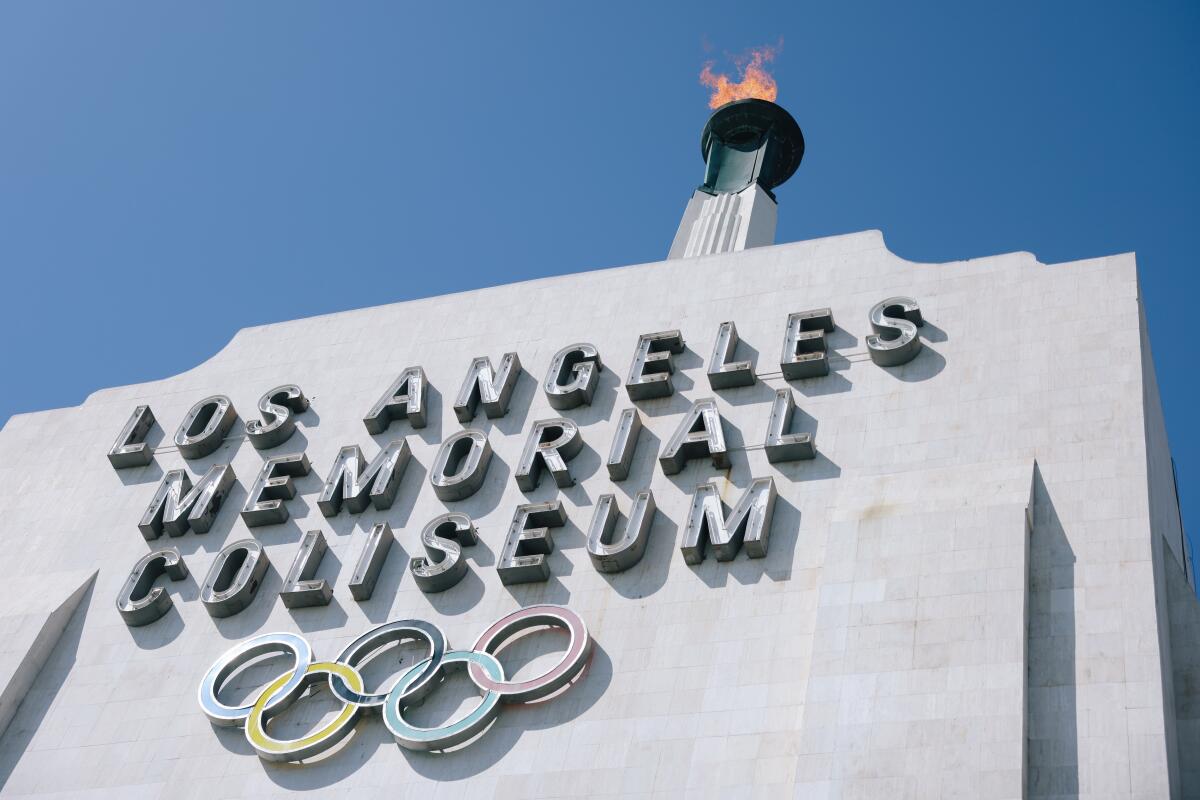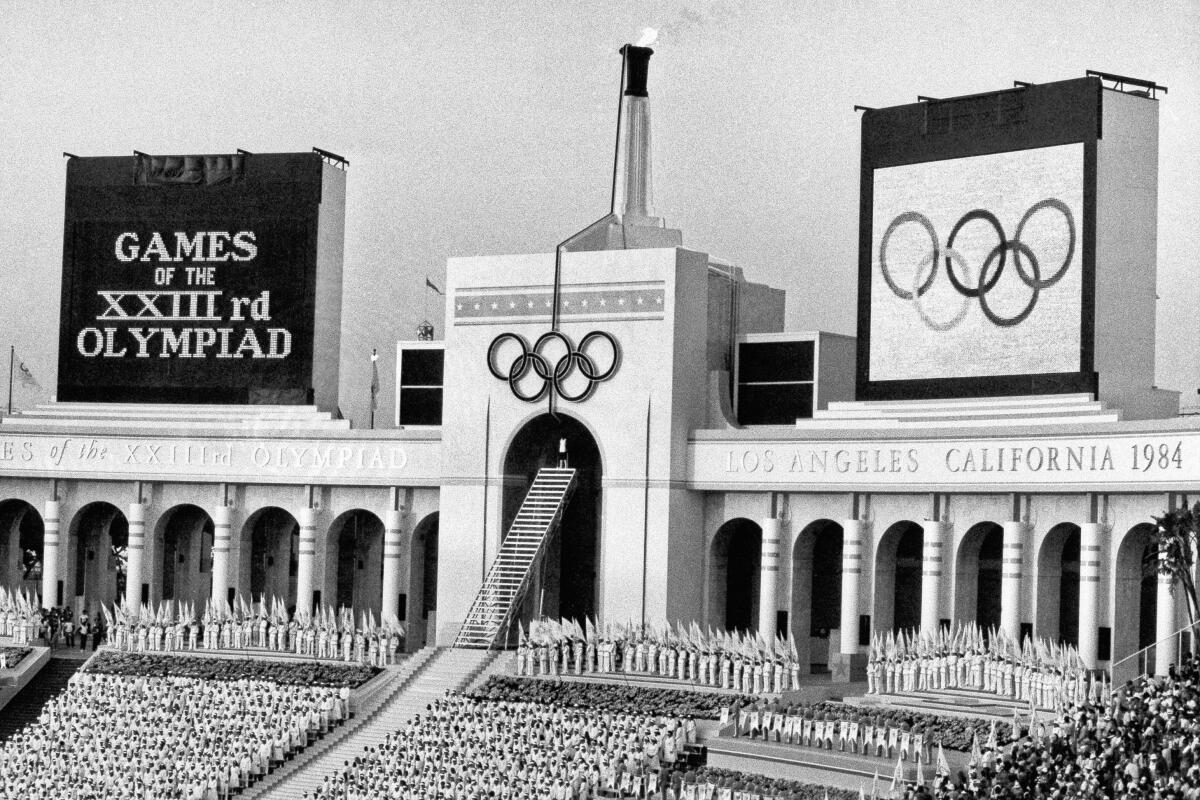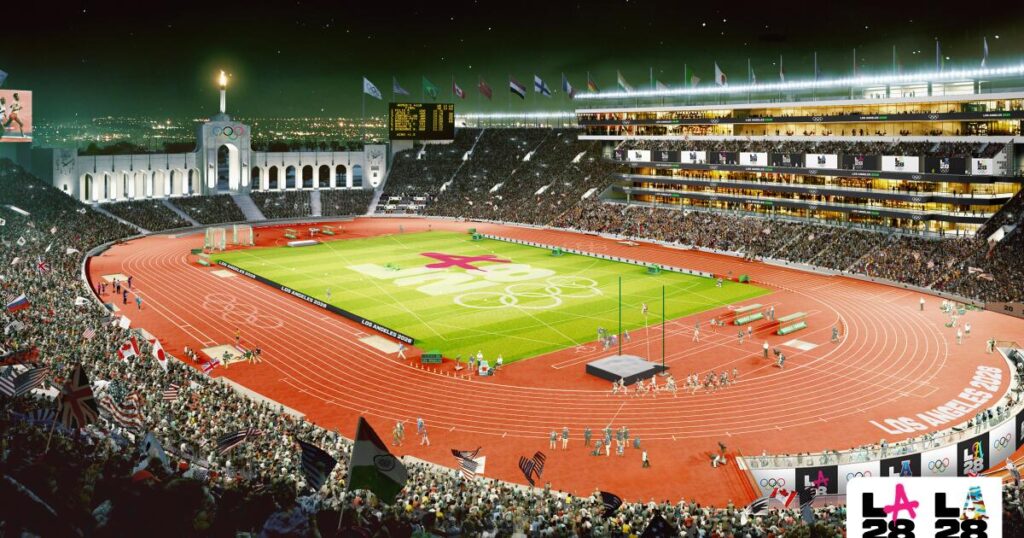There was no way the Olympics could return to Los Angeles for a third time without athletics at the Coliseum, not with the ghosts still lurking.
Babe Didrikson Zaharias competed at this historic stadium during the 1932 Summer Olympics, winning the javelin and hurdles. Carl Lewis won four gold medals at this stadium in 1984, but the event was also the site of an infamous collision between Zola Budd and Mary Decker in the 3,000 meters.
But when local organizers began planning for the 2028 Olympics, they faced a basic dilemma: There wasn't enough space on the Coliseum floor to install a track.
Renovations in the early 1990s had reduced the playing field's footprint by adding 14 rows of seats to the lower part of the bowl and moving the football stands closer together, and the LA28 organizing committee needed a temporary solution.

Renderings show how a new floor would be constructed above the Coliseum's front row of seating to create a larger space for athletics events, while the lower level would be used for warm-ups and various other functions during the 2028 Olympics.
(Courtesy of LA28)
The solution would require thousands of columns and metal plates to build a new floor about 11 feet higher than the current floor. Because the bowl slopes in all directions, this raised surface would have room to expand and cover all of the added seating.
For a city with enough existing world-class venues to host the Olympics without major construction, the $100 million project will be what LA28 president Casey Wasserman called “the most expensive and probably the most complicated thing we'll ever actually have to build.”
Not everyone is excited about the stadium's role in 2028. Coliseum officials have expressed disappointment with a proposal for the opening ceremonies to begin under the famous peristyle but move to the newer, more flashy SoFi Stadium for the formal ceremonies.
“The torch, the national parade and the Olympic oath should all take place at the Coliseum,” Coliseum Commission Chairman George L. Pula said.
LA28 officials have stressed the organization is committed to promoting the historic venue for both the Summer Olympics and the subsequent Paralympics, with chief operating officer John Harper describing the facility as a “beacon.”
Planning for athletics there began several years ago, when organizers studied technology used in European sporting events: At the 2014 Commonwealth Games in Glasgow, Scotland, workers erected 6,000 columns and about 200,000 tons of steel to create an elevated stadium.

On October 3, 2022, in Los Angeles, the Coliseum's torch was lit during an event honoring Peter V. Ueberroth, president of the Los Angeles 1984 Olympic Games Organizing Committee.
(Dania Maxwell/Los Angeles Times)
To do the same at the Coliseum, LA28 plans to begin construction as soon as USC plays its final football game of the 2027 season.
Grass and soil will be scraped away to expose the stadium's concrete foundation, and adjustable supports will be installed roughly every 10 feet. The work will be painstaking because the Coliseum has only one access point from the outside — the tunnel through which Troy's football players run onto the field. Some of the building materials may need to be hoisted from above the bowl with a giant crane.
“It's a very complex job because you're building in a very tight space,” said Bill Hanway, executive vice president of AECOM, the infrastructure consulting firm hired to oversee much of LA28's preparations.
After laying the metal decking on top of the columns, workers will add about 2 feet of gravel and soil to create a stable base, after which an artificial track and grass infield will be built for events like the discus and javelin.
The space beneath the floor could be used as a warm-up area or a call room where athletes check in before competing. LA28 is considering installing a mechanized platform that would slowly lift athletes back up to field level for a dramatic entrance before the women's 100 meters, for example.
“We're thrilled to have the Olympics in Los Angeles,” said Max Siegel, CEO of USA Track and Field. “We're really excited about their innovative thinking.”
Waiting until the end of the football season and then building all of this over a roughly seven-month period means the stadium may not be ready in time for the Olympic test events or USA Track and Field Championships in the early summer of 2028. That means crews will have to work quickly to repair the field in time for the University of Southern California's football home opener this fall.
“I think the good thing is the venues are all in place,” Wasserman said of Southern California's existing stadiums and arenas. “The other side of it is, they're heavily used.”

On either side of the Olympic flame are scoreboards commemorating the official opening of the 1984 Olympics at the Los Angeles Coliseum, a venue that will be used again for the 2028 Olympics.
(Eric Risberg/The Associated Press)
While spending $100 million on a one-time renovation may seem extravagant, LA28 needs a large stadium for track and field, one of the most popular events in the Olympics, and faced similar challenges with options like SoFi and the Rose Bowl.
“When you look at the cost compared to a new stadium, there's no comparison,” said Hilary Ash, LA28's vice president of games delivery and infrastructure.
Once the Games begin, organisers will waste no time in showing off their achievements: They have decided to upend the usual Olympic schedule, moving track and field events from the second half of the 17-day event to the beginning.
“The day after the opening ceremony we're going to have world-class athletics at the Coliseum, something we haven't had in a long time,” Wasserman said. “I think it's going to really generate a lot of energy.”

